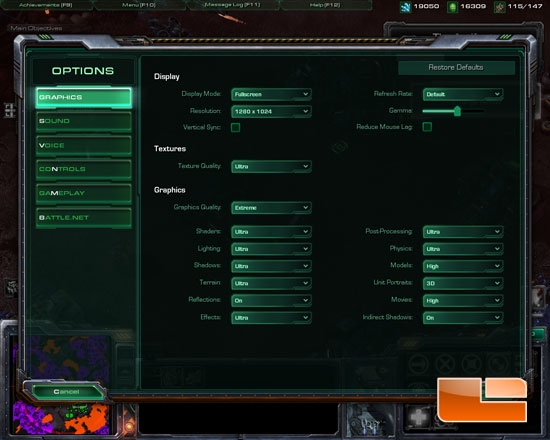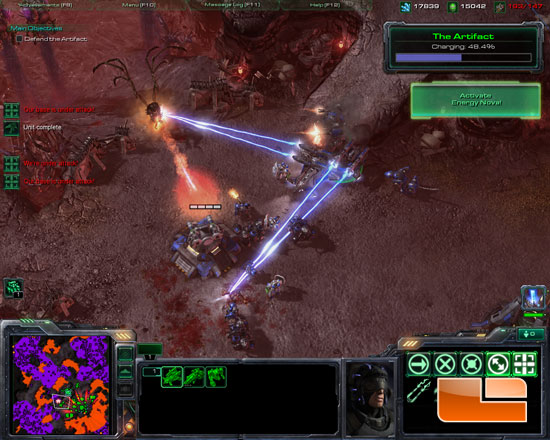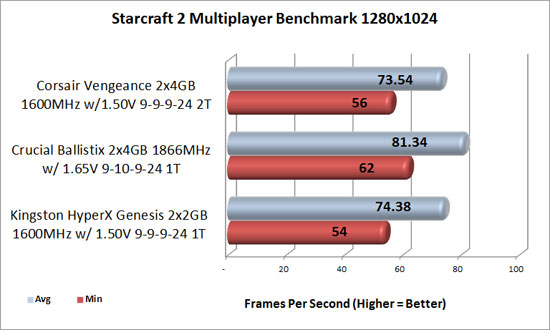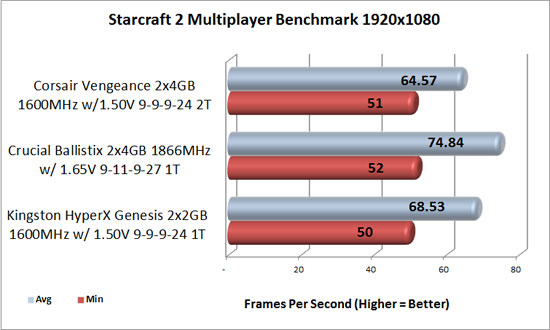Corsair Vengeance 8GB DDR3 1600 CL9 Memory Kit Review
Gaming: Starcraft 2
One of the most popular PC game series of all time is the Starcraft series. The original Starcraft, released in 1998, became a global phenomenon, particularly in light of its popularity as a multiplayer game. The original Starcraft is still played today in large, publicized multiplayer tournaments. Blizzard released another smash hit during the summer of 2010 when it released Starcraft II: Wings of Liberty to the world. Gamers around the world purchased Starcraft II, causing it to quickly become the fastest-selling strategy game of all time. Being another notoriously stressful real-time strategy (RTS) game, Starcraft 2 has a tendency to suffer from framerate slowdowns during intense battles, especially when hundreds of units are engaged in combat during the later phases of a level.


Our benchmark takes place during the final singleplayer level, All In. During this level the player controls the Terran armies against numerous waves of Zerg attackers. During our test, the player has amassed an army of 200 units and uses those to defend against the Zerg hordes while collecting many resources and processing several unit upgrades. We are testing with the latest version of Starcraft 2, which is 1.4.1. We play the level on the Brutal difficulty and measure the frame rate using Fraps.


Results are generally as expected, with the 1600MHz kits falling behind the Ballistix at both 1280×1024 and 1920×1080. However we were surprised to see the difference between the Hyperx, which runs at 1T, and the Vengeance at 2T in the high resolution test.
After completing our tests, we turned to overclocking these modules to see how we can maximize their potential, which we will discuss next.

Comments are closed.